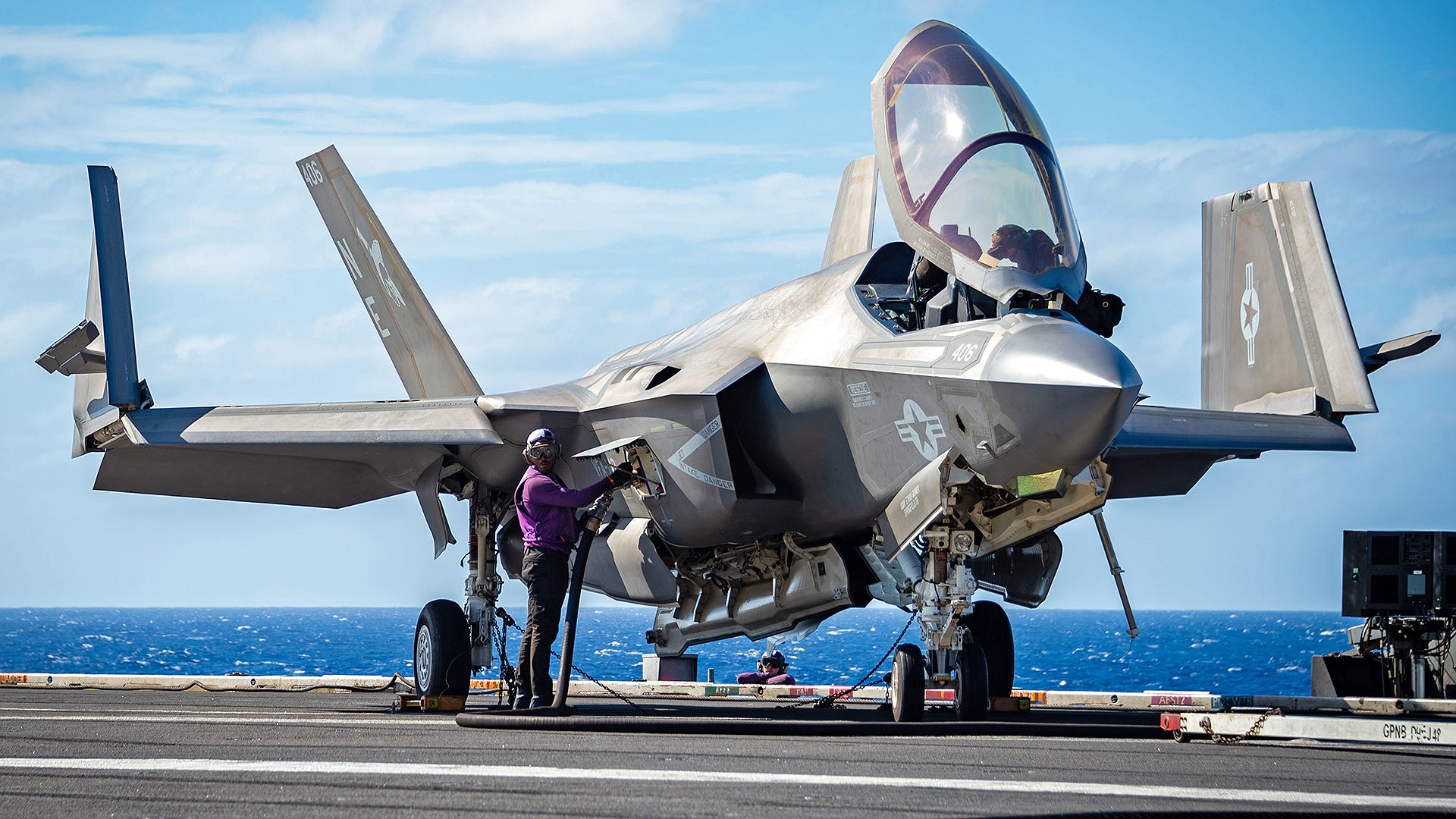The future U.S. Navy carrier air wing could include a ‘super squadron’ of as many as 20 F-35C stealth fighters, a senior official from the service has said. The disclosure came just days after the jets returned from their debut operational cruise aboard the Nimitz class carrier USS Carl Vinson (CVN-70). That first deployment was punctuated by a high-profile landing mishap that we reported on in detail at the time and subsequently, but the Navy is happy overall with the aircraft’s progress.
Rear Adm. Dan Martin, commander of the Carl Vinson Carrier Strike Group, was speaking to the media after the carrier’s return from its deployment to the Asia-Pacific region, which lasted more than six months. “Right now, we’re probably going to go to a 14-aircraft squadron vice 10,” Martin told reporters, including Megan Eckstein of Defense News. “I’ve heard noise of us thinking around the possibility of going to a 20-aircraft squadron,” he added.

Martin praised the “seamless integration” of the 10 F-35Cs from Strike Fighter Squadron 147 (VFA-147), the “Argonauts,” into the air wing. The air wing itself had already been enlarged for this cruise thanks to a pair of additional EA-18G Growler electronic attack jets and one more E-2D Advanced Hawkeye radar plane. Typically, an air wing includes five EA-18Gs and four E-2s when it deploys.
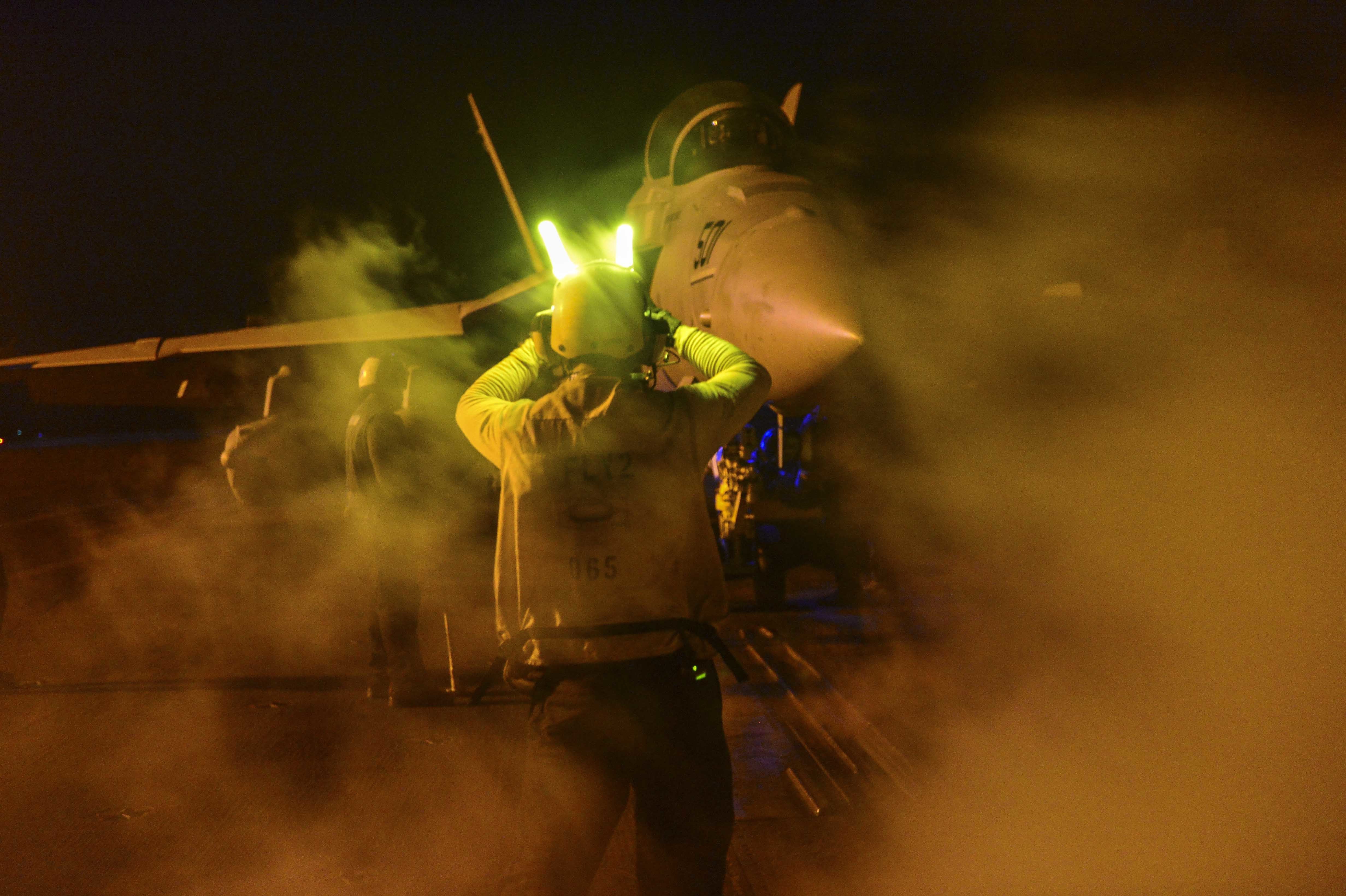
The revised vision of the carrier air wing that Martin says is now being studied is potentially the latest change in a steady line of modifications for the F-35C force structure.
Previously, the Navy had planned to field two F-35C squadrons per air wing with 10 aircraft each. In September 2020, Rear Adm. Gregory N. Harris, director of the Air Warfare Division, laid out plans for an air wing that included 16 F-35Cs within one squadron. By July 2021, that single squadron had been trimmed to 14 jets, confirmed by Rear Adm. Andrew Loiselle, the new Air Warfare Division director, to the House Armed Services subcommittee on tactical air and land forces.
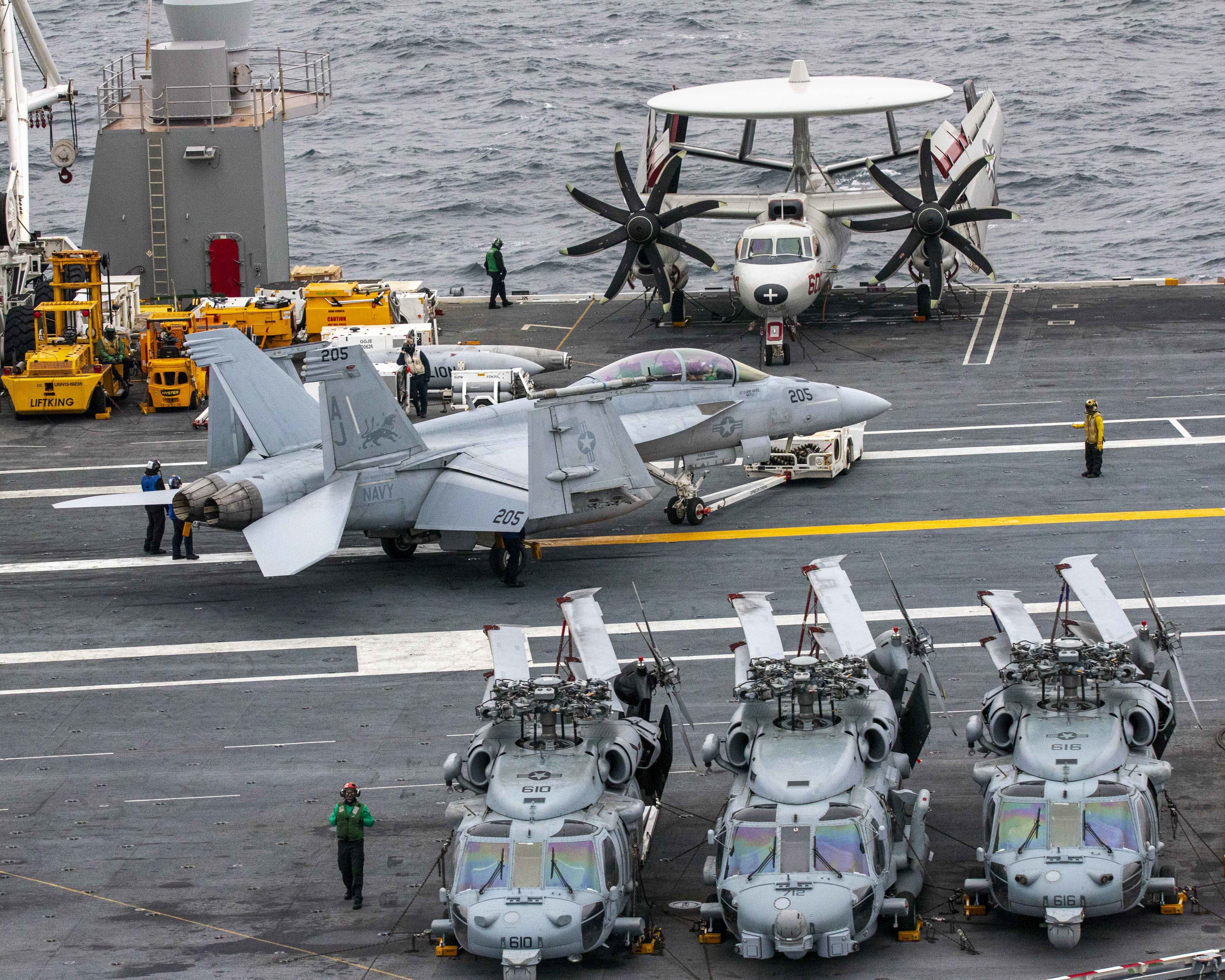
All this time, the carrier air wing has included 44 strike fighters, with the service weighing up the optimum mix of F-35Cs and F/A-18E/F Super Hornets to help address its tactical fighter shortfall.
It’s unclear how F/A-18E/F numbers would be affected by the introduction of a ‘super squadron’ of F-35Cs, but one option would be to return to the earlier plans, which proposed 20 F-35Cs (made up of two squadrons, rather than one) and two 12-aircraft squadrons of Super Hornets, for a total of 44 strike fighters.
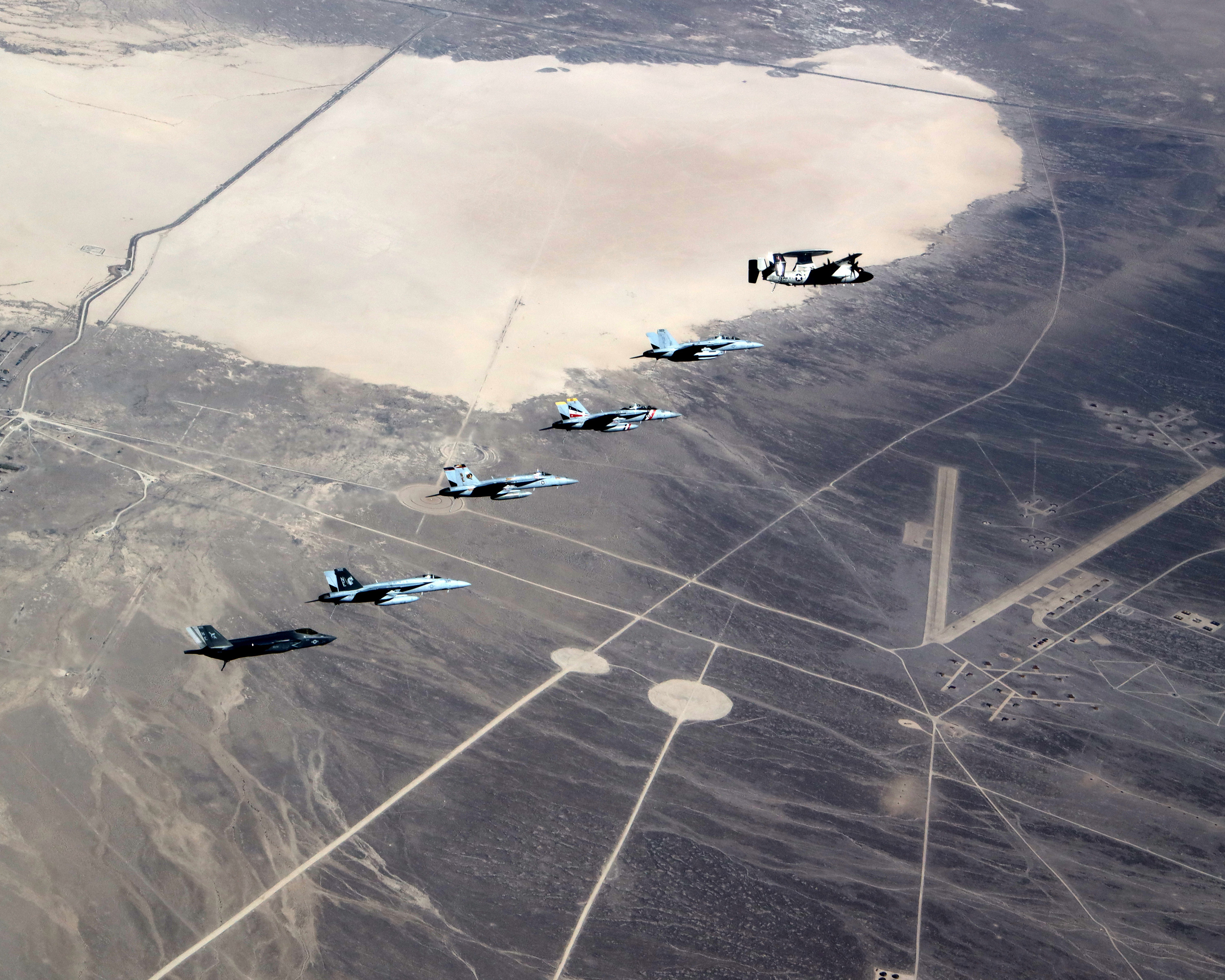
However, with plans afoot to increase the numbers of EA-18Gs and E-2s, as well, the issue of space above and below decks becomes more pressing. Even if Super Hornets make way for F-35s on a one-for-one basis, retaining the overall total of 44 strike fighters, the stealth jets, although smaller than the F/A-18E/Fs, require more and bulkier support equipment.
This poses a challenge as to how to fit all these aircraft in the carrier, or what officials refer to as “deck density.” Some members of the Vinson crew noted that this was a problem during the latest cruise, although to some degree this is to be expected when taking a new aircraft type to see in an operational setting.

Even before the carrier departed on its deployment, efforts were made to free up space on deck and in the hangar. That included removing or reducing items of non-critical support equipment. Furthermore, Capt. P. Scott Miller, commanding officer of the Vinson, confirmed that “a lot of treadmills and exercise equipment kind of littering the edges of the space” on the hangar deck had also been removed.
One factor that should help the issues is the planned reduction in the number of helicopters within each air wing, although Martin issued a word of warning here, too: Of the 19 rotorcraft that were part of the latest Carl Vinson Carrier Strike Group deployment, “We needed all of them,” he said. The MH-60R/S Seahawks are used for a diverse array of missions, including anti-submarine warfare, surface strike, search and rescue, logistics, and others. In the past, the Navy has said it wants the carrier air wing to include six to 10 Seahawks by 2030, as seen in the graphic below:
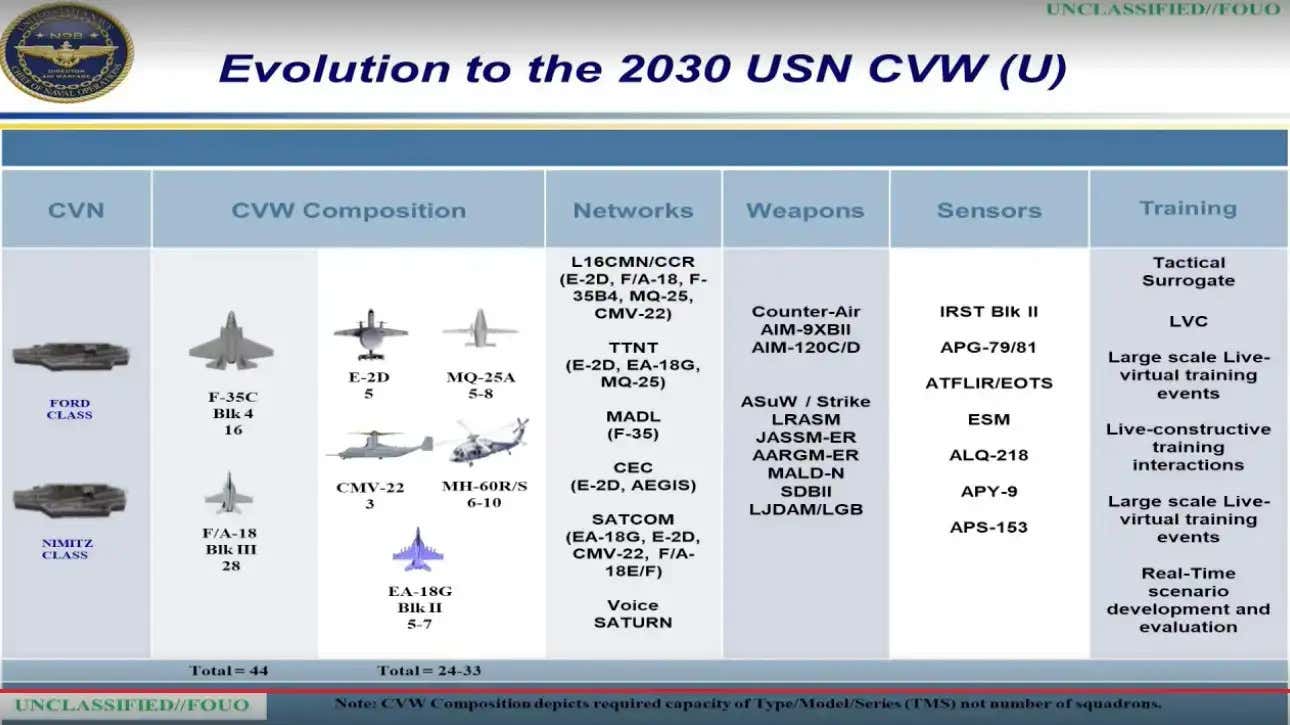
At the same time, the Nimitz class carriers that provide the backbone of the flattop fleet should still have some additional capacity for aircraft, having been built to accommodate larger air wings than they do today. During the 1980s and 1990s, they often embarked 80 to 90 aircraft each, while the Vinson began its deployment with 67 aircraft onboard.
Whatever way the Navy deals with the jigsaw puzzle of putting together its optimum future carrier air wing, it’s good news for the F-35C. At least some officials are clearly advocating that the service should return to the plan of having 20 of the stealth jets on each carrier.
What is less clear is how the U.S. Marine Corps, which will also operate its F-35C squadrons from big-deck carriers, will fit into this puzzle. As it stands, the Marines are currently making the F-35C’s second carrier deployment, with Marine Fighter Attack Squadron 314 onboard USS Abraham Lincoln, part of a commitment to have an eventual four F-35C squadrons available for carrier deployment. The Marines, for their part, are also in the midst of developing their F-35C deployment procedures, including an early emphasis on using austere land bases, which you can read more about here, but it’s unclear if the service’s squadrons would be increased in size.

The new Navy air wing vision is being driven by the recognition that, in the future, carriers and their embarked aviation assets will likely be required to operate — and potentially go to war — in the Asia Pacific region, against a near-peer competitor, namely China. As well as hostile stealth fighters and drones, such a scenario would also involve high-end surface and submarine threats which would have to be countered over much longer distances than in previous theaters.
The fact that China, and the Asia Pacific in general, is at the forefront of the Pentagon’s minds, including in the National Defense Strategy, is also reflected in the fact that the Vinson remained in the 7th Fleet and Indo-Pacific areas of operation throughout its latest cruise.
The new-look carrier air wing will therefore parallel the Navy’s broader transition from fighting primarily close air support missions on the ground in the Middle East and Afghanistan to preparing to fight a high-end enemy in the Asia Pacific region, where air supremacy is no longer guaranteed. It is in this area that the F-35C, with its combination of low observability, combat radius, advanced sensors, and networking capability, comes into its own.
“It’s a brand-new aircraft with advanced sensors, so we like to pair that with a Growler to complement each other,” Martin said of the F-35C. “And when you fly around that theater … they pull so much into the cockpit; the sensors onboard can see activity that other aircraft cannot.”
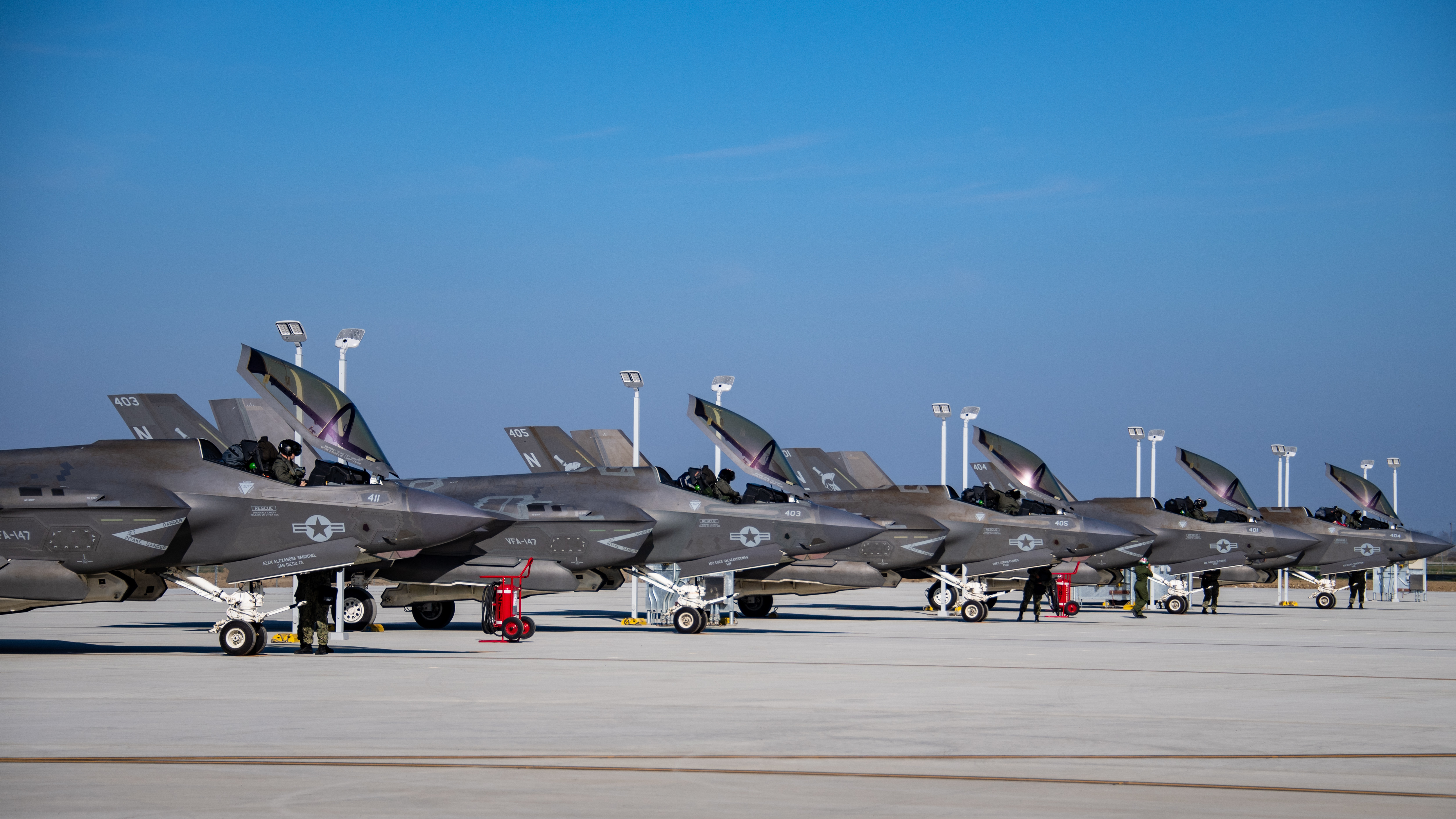
Adding more EA-18Gs and E-2s to the air wing also helps reinforce this ambition. While the Growler helps address the proliferation of multi-layered air defense systems likely to be encountered in a Pacific confrontation, more Hawkeyes mean the air wing is able to have situational awareness and early warning, as well as networking capabilities, over a wider area. Martin said he wants to add more EA-18Gs to the seven jets that were aboard Vinson, which was already two more than is standard.
Ultimately, the “air wing of the future” remains a work in progress. The new CMV-22B Osprey carrier onboard delivery aircraft made its first operational cruise with a detachment aboard the Vinson, too. The MQ-25A Stingray carrier-based tanker drone will be the next new platform to join the air wing and could eventually undertake a wider range of unmanned missions; even in its initial refueling role, space will still need to be made for it in the air wing. In the past, the Navy said it wanted to field between five and eight of the drones on each carrier.
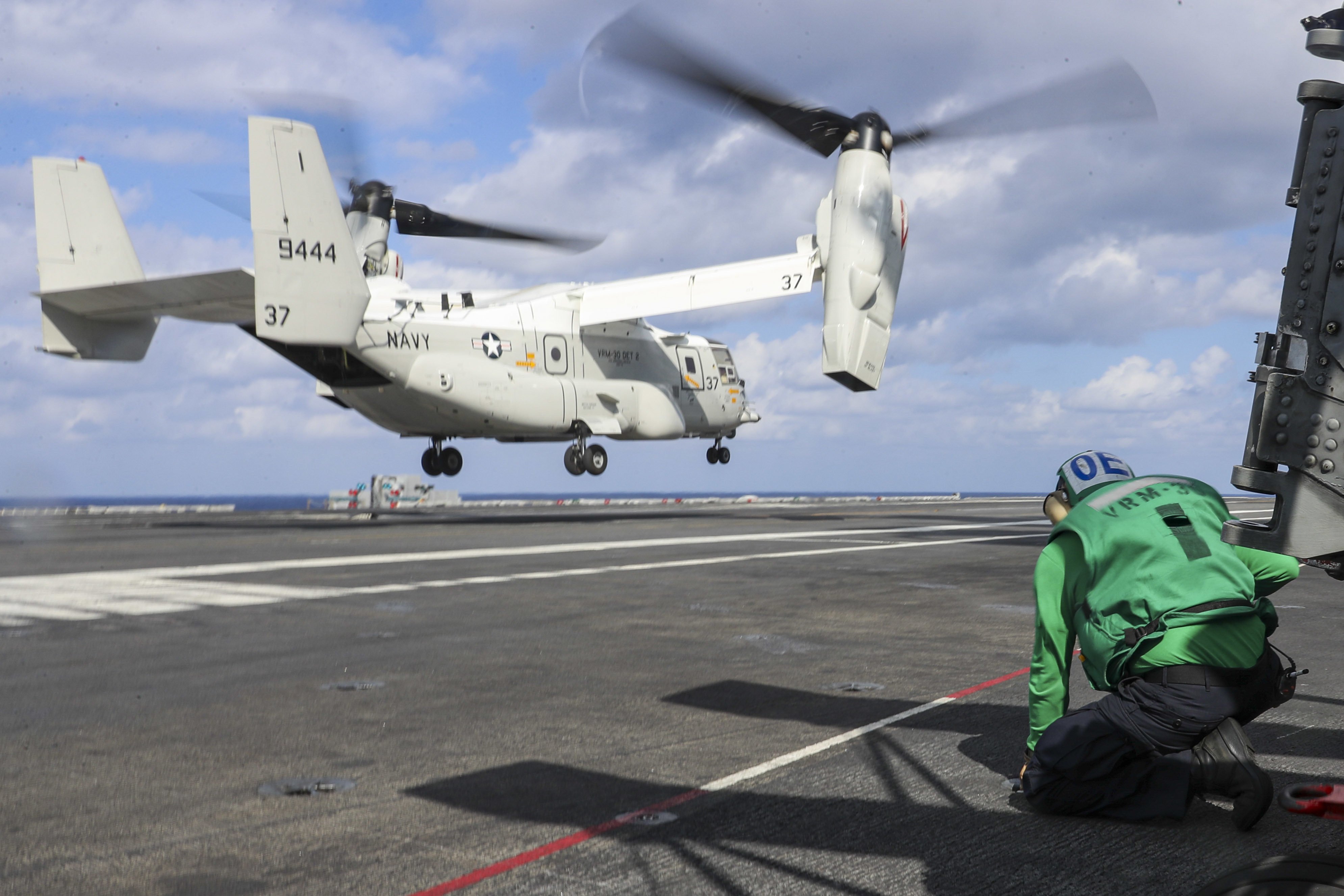
Beyond that, the Navy is already forging ahead on its Next Generation Air Dominance program, a “family of systems” with the F/A-XX as its centerpiece — manned, unmanned, or optionally manned — as the Super Hornet’s replacement in the carrier air wing. The F/A-XX is part of a wider vision that also includes replacing the EA-18G and E-2, the latter potentially with some kind of drone while working toward an air wing that could eventually feature as much as two-thirds unmanned aircraft. This transition will take time, however, with an initial aspiration to achieve a 40-60 unmanned-manned split, before transforming that to a 60-40 unmanned-manned split in the long term.
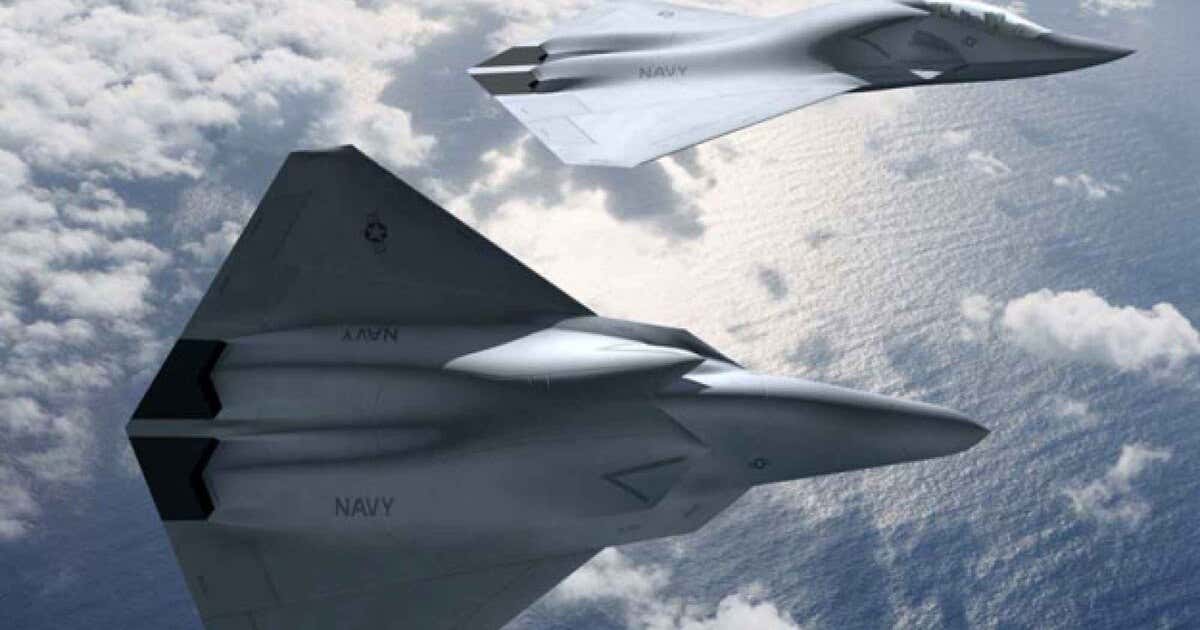
For long, the Navy has seemed to attach a lower priority to its version of the stealth fighter than the Air Force, Marines, or foreign operators, with the jet’s relatively slow path into operational service reflective of that. But with China set to remain the focus of future large-scale war-planning scenarios for the foreseeable future, the F-35C appears well-positioned to make itself indispensable as part of the Navy’s ever-changing air wing compositions.
Contact the author: thomas@thedrive.com
